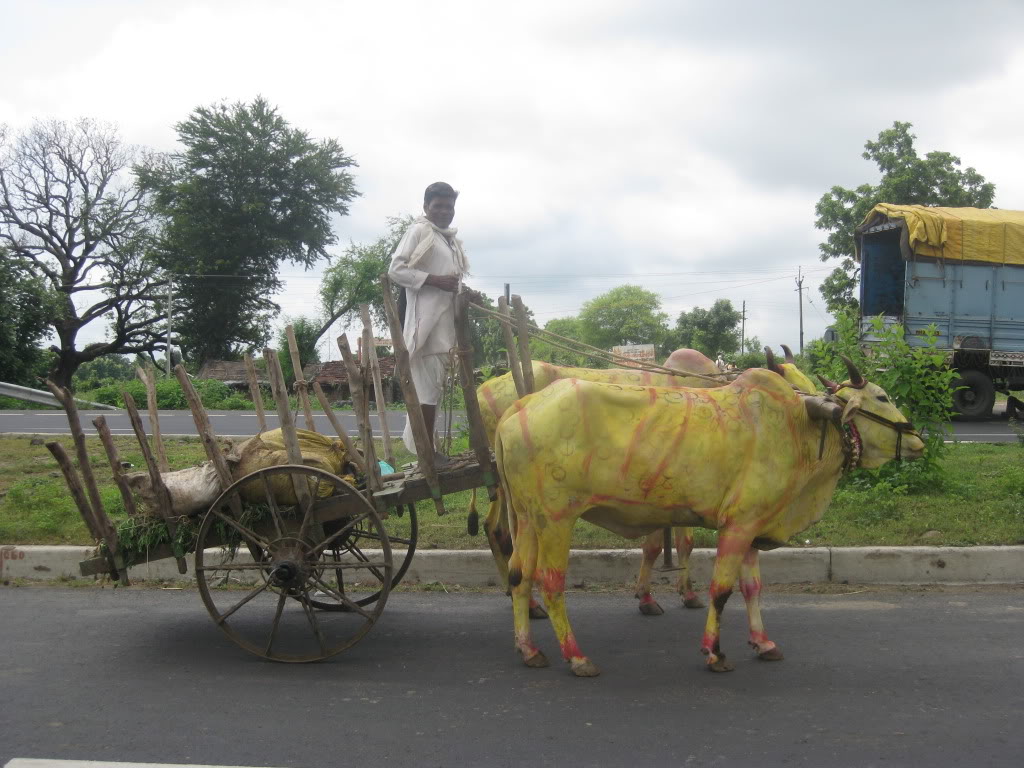
Throughout this tour, it seems as though people have been telling me, “wait until you get to India….”
“…It was a hot day today…”
“…Nice city, but a bit noisy…”
“…Traffic a bit thick out there…”
“…Lots of people out this afternoon….”
“Wait until you get to India…”
These six words became a sort of a proverb for me, and wound up influencing my mental preparation for the tour of India.
I had also gotten such a wealth of horrifying information about India from such a variety of reliable sources that I had resolved to make my way through India as quickly as possible before I even got here. Somewhat strange, considering that India was one of the three big pulls that drew me to this route in the first place. China and the Pyramids are the other two.
Ten days after arriving in Mumbai – formerly known as Bombay – I am still making my way through at a fast pace, although I would not say that India is a horrifying place in any sense. It is a great place in most ways, but there is also truth in much of what I had heard before my visit as well.
Before visiting, I had gotten ample warning about things that shock westerners in India such as bodies in the streets, people living in squalor, beggars, and so on. It is all here, but it is not particularly challenging to deal with on a daily basis. At least…not for me. Perhaps that says something about me. And I have not seen any bodies in the streets.
For me, there are only two significant challenges in India so far….
1) Traffic – it is more intense here than anywhere else – and it drives on the left side of the road.
2) People – I have had more encounters with people, and more encounters with friendly people during the past ten days than I have during any other time in my life.
Traffic is not a new story…but there is not a more dangerous place in the world, anywhere, than an intersection in India! Amazing!
As I travel around here, people ask me, every day, what I think about Indian culture. I tell them that the people are amazingly friendly. They really are. Moments when I am alone feel rare.
People here want to know where I am from, what my journey is all about, and where I am headed. This is an amazing change compared to Europe and the U.S.A. where it could be difficult, at times, to find people to talk to. It is not difficult to find people to talk to in India.
They do not just talk to you, however. People who have talked to me here want to help me however they can. I have been a tourist in a sense that I have never experienced, having the opportunity to tour dozens of peoples homes, and being given hospitality in places that I would never have thought of previously as sources of hospitality. Work shops, gas stations, restaurants, and even the side of the road. I have not, of course, actually been to dozens of peoples’ homes in India, because I have to refuse offers from time to time. Similarly, people have to refuse my requests from time to time when I ask them for a place to stay at the end of the day. Sometimes the timing or situation simply does not work. But the frequency with which people offer me a place to stay in India is amazing – in fact, overwhelming!
This is the biggest challenge – for me – of India. I grew up in a country with 1/4 the population of India, and in a part of it with a tremendous amount of space. Now I am traveling through a place with 4x the population of my own country and much less space. That might be an over simplification, but I believe that it is at the heart of the challenge in India.
The remarkable thing about this place is that the culture that exists – at least in the state of Maharashtra, and in the cities of Mumbai and Nagpur – is one of very open social communities. In the ways I have seen, Indians spend as much time together as they can as families, as Hindus, as truck drivers, as co workers, etc.
It seems that in a place where personal space is – for me – at such a premium, that a culture might have emerged where people seek always to avoid each other. This is certainly not the case in India. Or perhaps there are 500-million Indians avoiding each other in their apartments, and enough left over that it still seems really crowded out here.
More likely is that Indians know that they live in a place where it is going to be impossible to avoid each other all the time – or really, even very much of the time. So they have embraced the nature of India as a place with a billion people and made efforts to get along with each other.
Or at least, that is my impression after ten days. I will let you know how things are going after another ten days or so when I get to Kolkata – formerly known as Calcutta.
